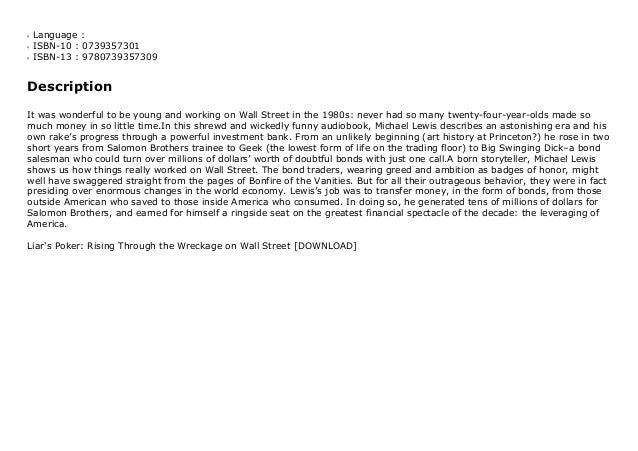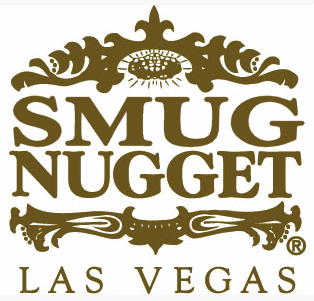Liar's Poker Rules Dollar Bills
The most common method is to have each player choose a bill (of US currency, generally a one dollar bill (A more primitive version of Liars Poker is sometimes called 'dollar poker.' A player's number for that round is the serial number on the bill selected. Play begins as one player makes the opening bid. A typical bid might be '5 sevens.' INTRODUCTION TO LIAR’S POKER. Liar’s Poker is a unique game of bluffing. It is a simple game, but its avenues to form coalitions and spy makes it both exciting and a social game. Despite the name, unlike typical poker games, no wagering is involved. The nature of the game makes it great for get-togethers, bars, and road trips.
I think your website is one of the best gambling sites on the net, and I have a question that I am hoping you would be able to answer. There is an Indian casino a few hours from my house that has some odd rules and regulations. I was wondering if you would be able to determine the house edge from these rules:- There is a 50-cent charge on each hand if your wager is between $5 and $25
- There is a $1 charge on each hand if your wager is $26 to $500.
- You can split up to 4 times, not including aces
-You can double on any first two cards - You can double after a split
- Dealer stands on all 17s
- Early surrender is available
- One card on each hand if you split aces
- $100 bonus on getting 7 cards without busting
- $100 bonus on getting 3 7's in a row
- $500 bonus for getting 3 Blackjacks in a row
- $10,000 bonus for getting 4 Blackjacks in a row
Any help you can give is appreciated.
I'm going to assume that eight decks are used and that the bonuses are not applicable if the dealer has a blackjack. Using the Blackjack Count Analzyer I get a player advantage of 1.4% with a $5 bet. Unfortunately, this advantage is not available at greater bet sizes as the comparable benefit of the bonuses decreases and the additional fee for bets of $25 or over. With a $24 bet the house edge is 1.4%, and with a $25 bet it is 3.3%. This certainly is a very interesting game. If you play it let me know how you do.

Don't worry about depositing too much money. I almost always deposit the maximum when playing for a bonus. What is much more likely to arouse suspicion is not playing enough.
First let me answer the unasked question on the probability that a specific number will show up n times on a random bill. There are 8 digits on a bill so the probability of n of a specific number is combin(8,n)*0.1n*0.98-n/108. Here is a table showing the probability for 0 to 8 of a specific number.
Specific Number Oddsin Liar's Poker
| Number | Probability |
|---|---|
| 8 | 0.00000001 |
| 7 | 0.00000072 |
| 6 | 0.00002268 |
| 5 | 0.00040824 |
| 4 | 0.00459270 |
| 3 | 0.03306744 |
| 2 | 0.14880348 |
| 1 | 0.38263752 |
| 0 | 0.43046721 |
| Total | 1.00000000 |
The next table shows the probability of every possible type of bill, categorized by the number of each n-of-a-kind. For example, the serial number 66847680 would have one three of a kind, one pair, and three singletons, for a probability of 0.1693440.
General Probabilities in Liar's Poker
| 8 o.a.k. | 7 o.a.k. | 6 o.a.k. | 5 o.a.k. | 4 o.a.k. | 3 o.a.k. | 2 o.a.k. | 1 o.a.k. | Probability |
|---|---|---|---|---|---|---|---|---|
| 1 | 0.0000001 | |||||||
| 1 | 1 | 0.0000072 | ||||||
| 1 | 1 | 0.0000252 | ||||||
| 1 | 2 | 0.0002016 | ||||||
| 1 | 1 | 0.0000504 | ||||||
| 1 | 1 | 1 | 0.0012096 | |||||
| 1 | 3 | 0.0028224 | ||||||
| 2 | 0.0000315 | |||||||
| 1 | 1 | 1 | 0.0020160 | |||||
| 1 | 2 | 0.0015120 | ||||||
| 1 | 1 | 2 | 0.0211680 | |||||
| 1 | 4 | 0.0211680 | ||||||
| 2 | 1 | 0.0020160 | ||||||
| 2 | 2 | 0.0141120 | ||||||
| 1 | 2 | 1 | 0.0423360 | |||||
| 1 | 1 | 3 | 0.1693440 | |||||
| 1 | 5 | 0.0846720 | ||||||
| 4 | 0.0052920 | |||||||
| 3 | 2 | 0.1270080 | ||||||
| 2 | 4 | 0.3175200 | ||||||
| 1 | 6 | 0.1693440 | ||||||
| 8 | 0.0181440 | |||||||
| Total | 1.0000000 | |||||||
o.a.k. = 'of a kind'
For more information, see my page on liars poker.
Assuming you put the greatest priority on player odds I would have to go with a Unified Gaming casino. You'll enjoy a player edge of 0.57% assuming you following the proper strategy.
Liar S Poker Rules Dollar Bill
Liars Poker Rules Dollar Bills Free

Thanks for your kind words. Unfortunately I do not have any such proof at hand. If I did set about proving it myself I would use a computer simulation. However skeptics would probably claim something ridiculous, like that bad players disrupt the karma of the game, which can’t be replicated in a computer.
You’re absolutely right. The fewer bets actually made the better the odds are of actually winning. The expected loss is also a function of the total amount bet. If the player keeps circulating money back and forth between himself and the dealer the house edge will gradually grind the player down. However maximizing the odds of winning should not be the only objective to gambling. Having fun is also important. Plopping an entire bankroll on the table in one bet may not be as fun as playing it out gradually. It may also may have a greater chance at a large loss depending on how much play is involved in the alternative. If one really wants to cut down the house edge the best thing to do is put your money in the machine marked 'change.'
When the dealer stands on a soft 17, the dealer will bust about 29.1% of the time. When the dealer hits on a soft 17, the dealer will bust about 29.6% of the time. According to my blackjack appendix 4, the probability of a net win is 42.42%. However, if we skip ties, the probability is 46.36%. So, the probability of a four wins in a row is 0.46364 = 4.62%.
Based on my research, the placement of the machine doesn't matter. Regarding what type of slot to play, choose something simple, not a game with fancy signage and video. My best advice is to switch to video poker.

I have a whole page on the topic of card counting in baccarat. Briefly, the best card for the Player is 4, and for the Banker is 6.
Liar's poker is an American bar game that combines statistical reasoning with bluffing, and is played with the eight digits of the serial numbers on a U.S. dollar bill. The numbers are usually ranked with a zero counting as a ten, and a 1 being highest as 'ace'. Normally the game is played with a stack of random bills obtained from the cash register. The objective is to guess how often particular digits appear across all bills held by players, with guesses increasing in value or quantity until a player challenges the most recent guess.

Liar's dice is a similar game played with dice, and Commune is a similar game played with cards.
Gameplay
Each player takes a dollar bill and looks at its serial number, without letting any other players see. A player is chosen to start, and they make an opening bid on how many of a particular digit they believe appears across all serial numbers held by the group. For example, if the first player bids three 6s, he is predicting that there are at least three 6s among all the players' banknotes, including his own.
Liar's Poker Rules Dollar Bills
The next player can bid a higher number at that level (three 7s), any number at a higher level (four 5s) or challenge. The game continues clockwise around the table until a particular bid attracts a challenge from every player other than the bidder.
When a challenge is made, each player reveals how many of the bid number they have on their note's serial number. If the challenge was correct (and the number on the bills is lower than the challenged bid), the bidder loses a dollar to each of the other players. If the challenge was incorrect, the bidder wins a dollar from each of the other players.
Trading floor personnel of the kind to be found in Michael Lewis's book in the 1980s often played a variant on the above whereby a player who is called by all the other players can raise his own bid, thereby doubling the bet. For example, if he is called by all the other players on five fours he can then bid, say, five fives, with the bet doubled to two dollars. Called again, he might then go to five sixes, with the bet increased to four dollars. In this way, a clever player might reach his intended target of, say, five aces and win, say, sixteen or thirty-two dollars from each of the remaining players instead of merely one dollar. For this reason, many finance professionals discounted Michael Lewis's story of the 'million-dollars-no-tears' bet allegedly proposed by CEO John Gutfreund on the grounds that there can be no single-stake bet in Liar's Poker because one cannot know whether or not the bet will be escalated in this way.
In popular culture
- In the 1965 film Cat Ballou, the sheriff is confronted playing liar's poker at the barn dance.
- In the 1972 film 'The Getaway', Steve McQueen's character Doc McCoy challenges Ali MacGraw's character to a game while looking at a bill, by saying 'Five fours'.
- Elliott Gould's and Jim Bouton's characters play a round as friends in the beginning of the 1973 neo noir film, The Long Goodbye.
- In the 1977 movie Semi-Tough, Burt Reynolds' and Jill Clayburgh's characters play an ongoing game of liar's poker periodically throughout the movie.
- Characters on the show Quincy M.E. were often seen playing Liar's poker.
- In the WKRP in Cincinnati episode 'Herb's Dad', Herb's father, and later Herb himself, play liar's poker with Johnny and Venus.
- In Season 3, episode 8 of Magnum, P.I., 'Foiled Again,' Magnum and his two friends pass the time by playing liar's poker.
- In his 1989 book Liar's Poker, Michael Lewis details how Salomon Brothers traders would play liar's poker. He recounts how John Meriwether once challenged CEO John Gutfreund to a game of liar's poker for stakes of ten million dollars.
- A game of liar's poker was played in an episode of the TV series Hustle (Season 3, Episode 3) where one of the main characters plays and loses against two merchant bankers.
- In The Wire episode Dead Soldiers, Tommy Carcetti and Anthony Gray play a game.
- In the 2011 movie Hall Pass, the group of characters play a game.
- Anne O Faulk's novel Holding Out uses the game as a plot point.



